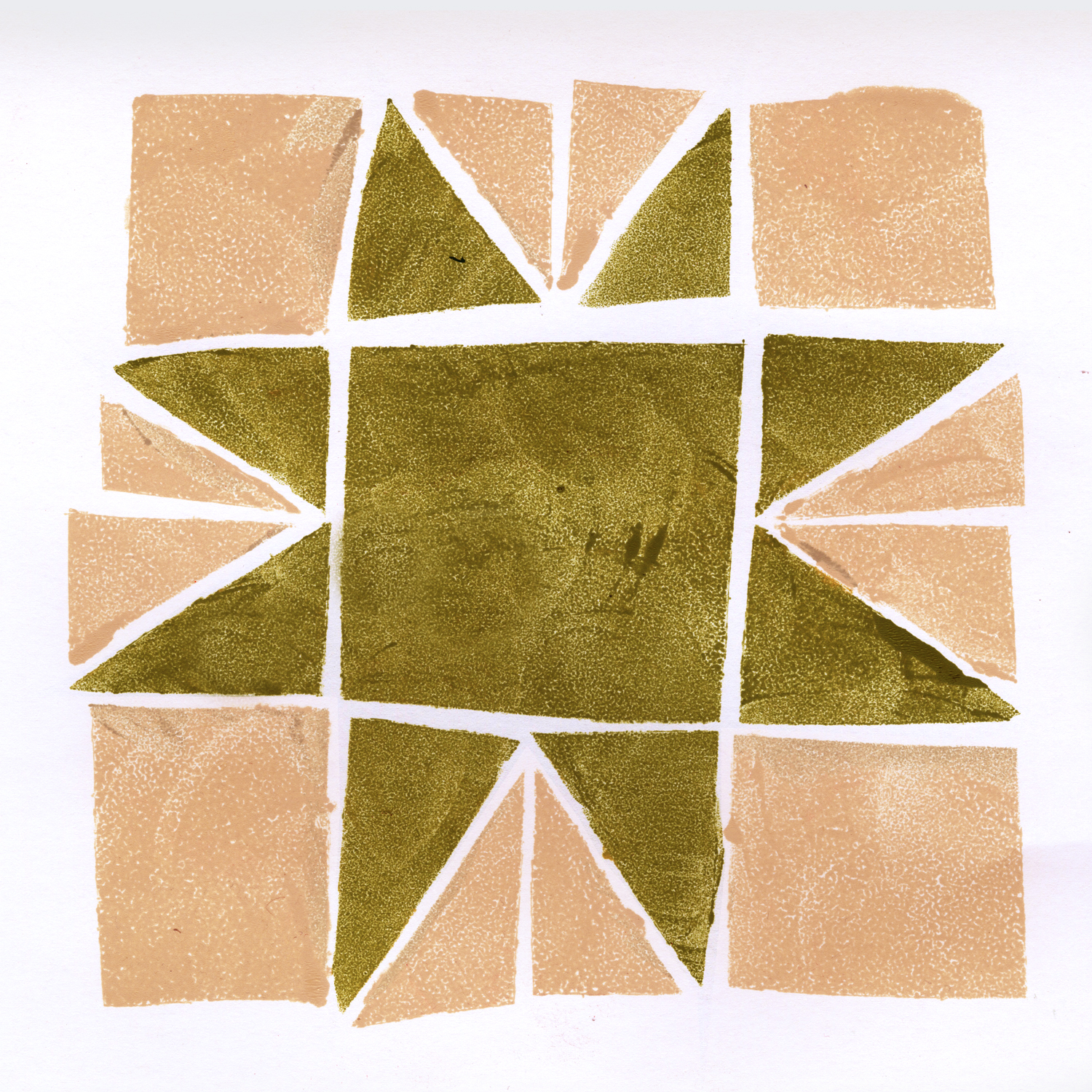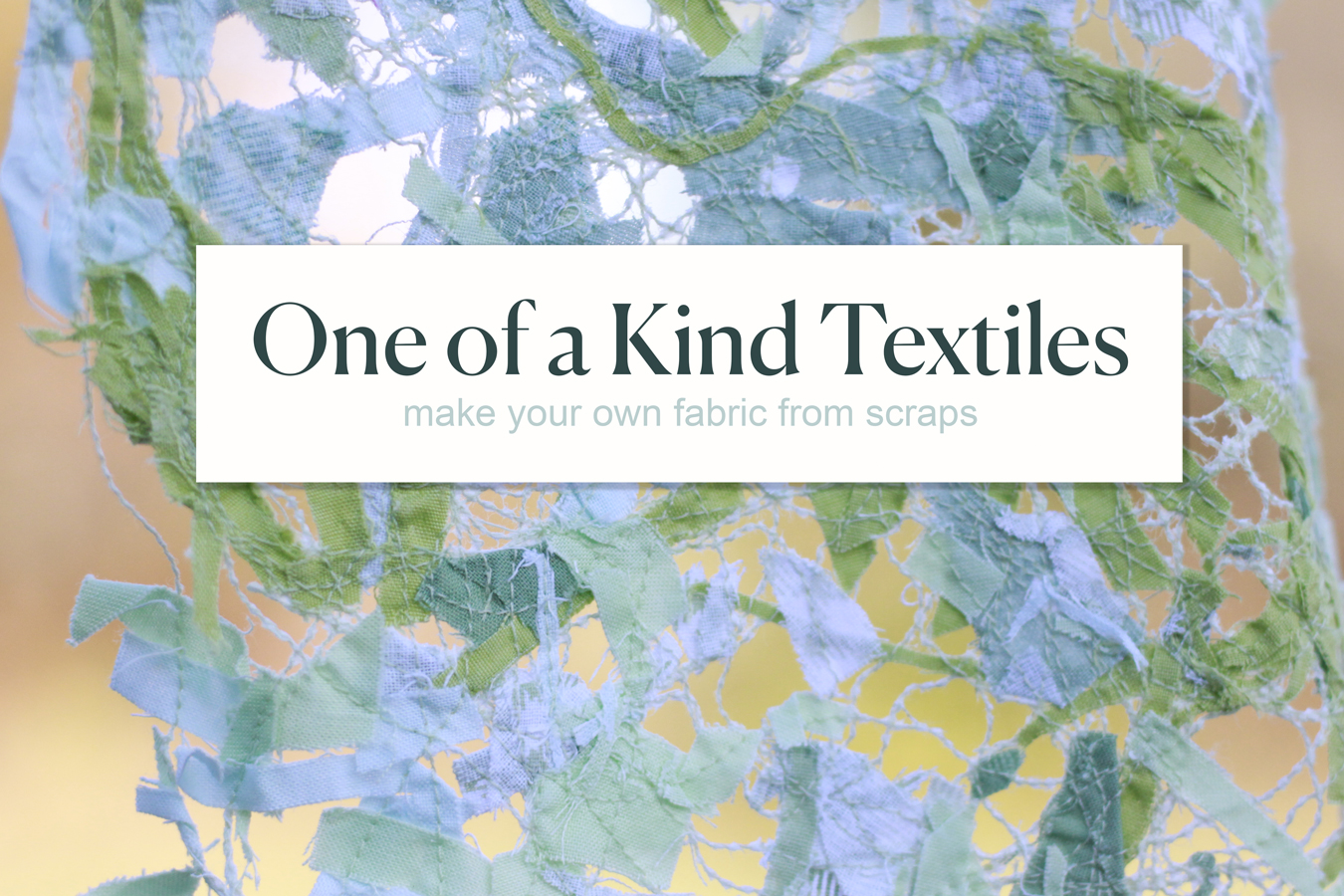Using just a few tools you can make fabric from scraps. If you are like me, you have loads of small scraps from your favorite project that you can’t part with. These beautiful one of kind pieces of fabric can be use for quilting, zipper pouches, plushies, patches or applique for clothes, doll clothes, greeting cards or even sold to other crafters!
Supplies | Fabric from Scraps
Most things you’ll be able to find on hand with the exception of the water soluable paper.
- Water Soluable Paper ( I use the brand Juvale)
- Thread (Don’t use your best and favorite thread as this project can go through a lot of thread.)
- Sewing machine (I use a Juki)
- Walking foot or presser footer with large “skis”
- Scraps (You can use almost anything in your creations – yarn, thread, lace and other interesting fibers. There’s no limit to what you can do!)
- sissors or exacto cutter with cutting board
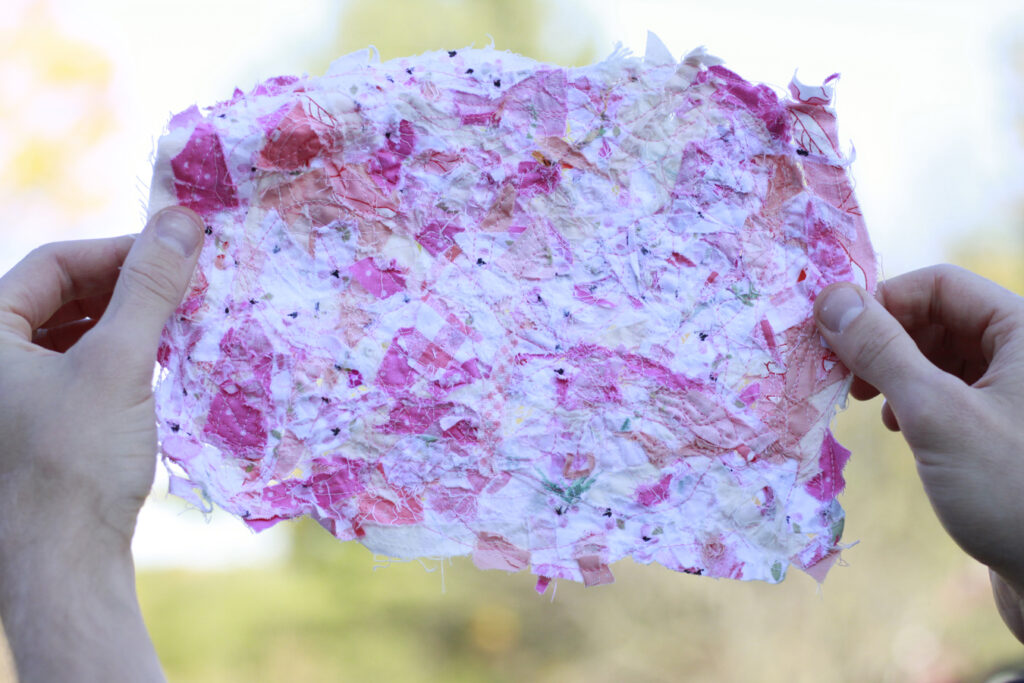
Storing and Collecting Scraps
After each project I make (usually a quilt), I keep the scraps in zip lock bags. This allows me to keep the color schemes together for future projects like making my own fabrics. When my scraps are stored tidy, I’m more likely to use them.
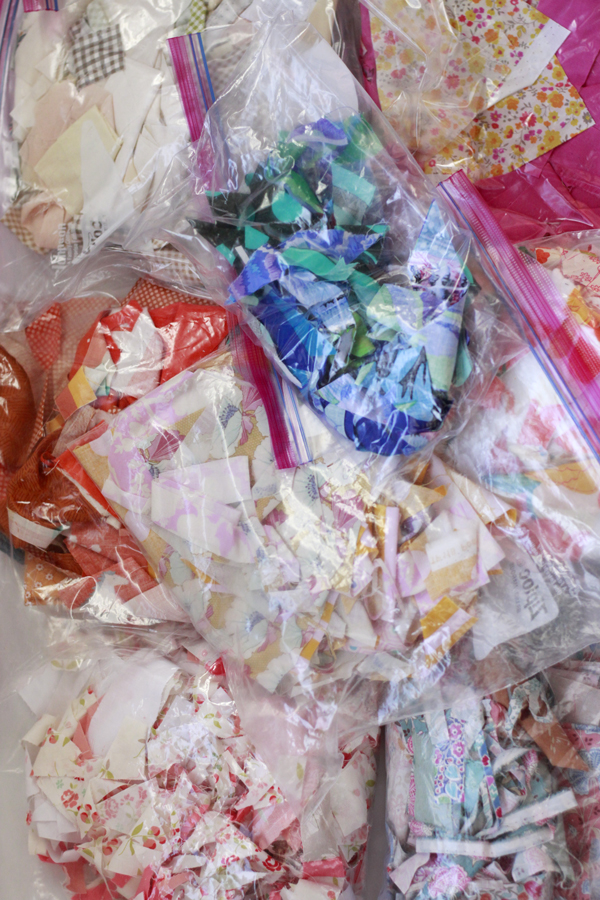
Getting Started Making Fabric From Scraps
Gather your scraps. The scraps below are a nuetral palette from my “organic quilt” project.

You can shred the fabric into different sizes for variation. Smaller shreds will get a more detailed, texture or “confetti” look and larger scraps may feel more fabric like. Chooses whatever is best for your project.
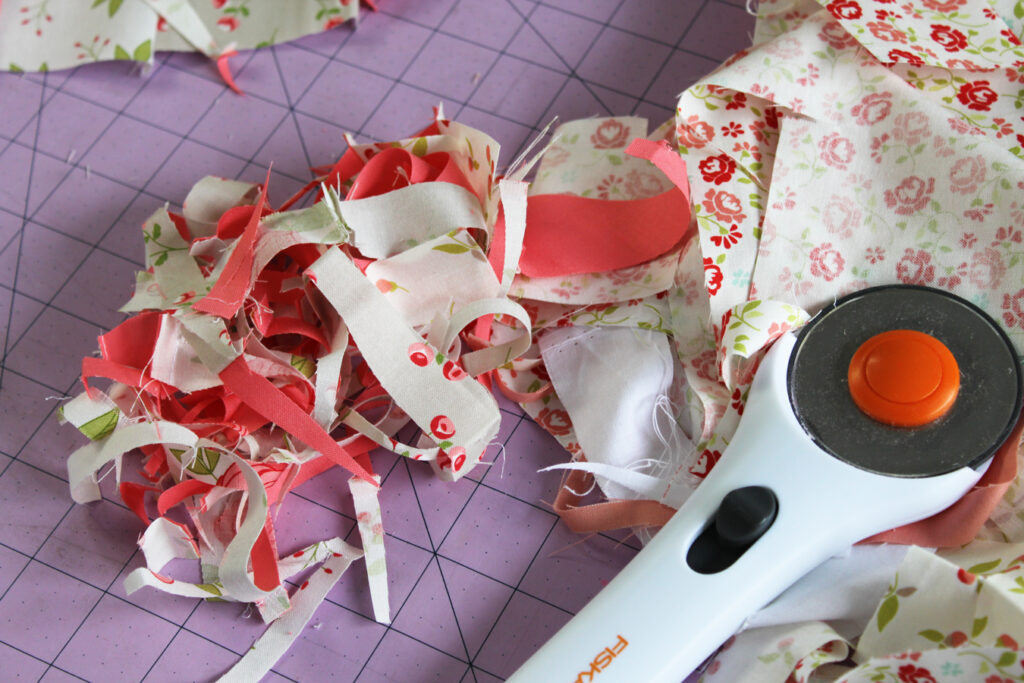
It is crucial to start with a fresh needle as you will be punching through the fabric and the thin paper. A sewing foot with big skis makes it easier to sew over bunched up fabric. A walking foot like I have helps things stay put.
Step one: Arranging scraps
I start by laying on the larger scraps onto a water-soluble paper. You can sew all over the fabric in any direction. The first few pieces to sew down feel awkward. Sewing will become easier and less fragile after more fabric is tacked down.
Do not fret in the paper rips. Continue sewing. If it’s causing you issues, add a new sheet piece of water soluable paper.

Step two: Sewing & Designing
After you have a loose foundation of scraps secured, add more scrap pieces.
Place smaller details you want to include on top. Consider a well placed piece of yarn, scraps from a favorite fabric or even birds nest of yarn. Is there any areas you’d like to repliate to finish the fabric? If you are happy with the look, remove the project from the sewing machine.
The back of your new scrap fabric will look like this:
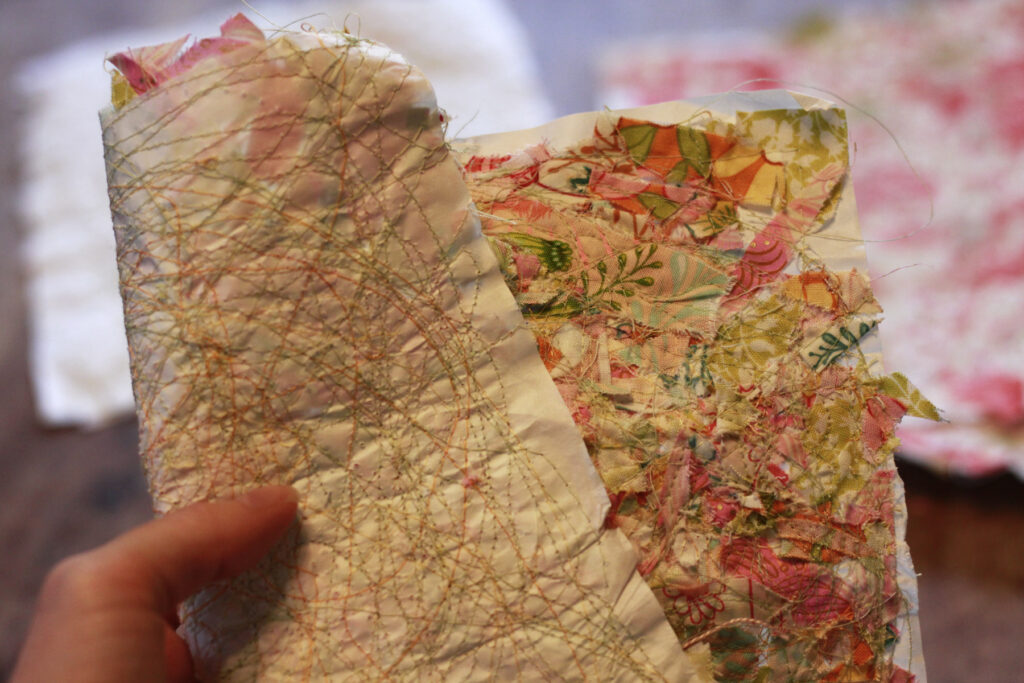
Using scraps of the same size will yield different results. The fabric can be as thick and your sewing machine will allow. You can creat some studier fabrics for sewn bags or boxes. Continue to add more pieces untill you are happy with how your fabric from scraps look.
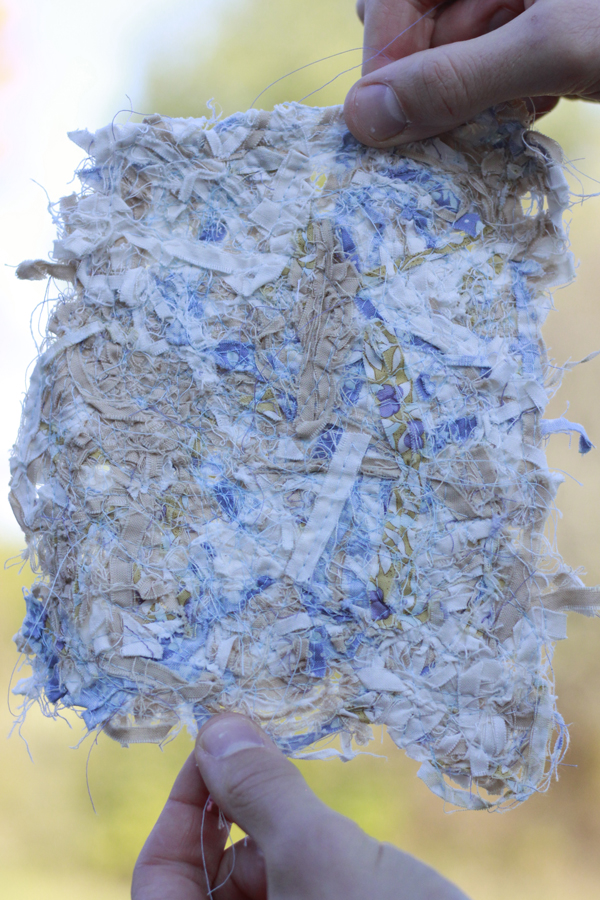
Creating a Lacey Look
The Pro’s of using a Water soluable paper:
If you’d like your handmade fabric to have a lacey quaility, you can leave some of the paper area without fabric. This is why I prefer to use a water soluable paper over a fusible option.
DIYs’ suggest fusible, iron-on fabric for this project, but water soluable paper yields a different look. When using fusiable fabric, only one side of the fabric is “usable.” This is why I love water soluable paper.
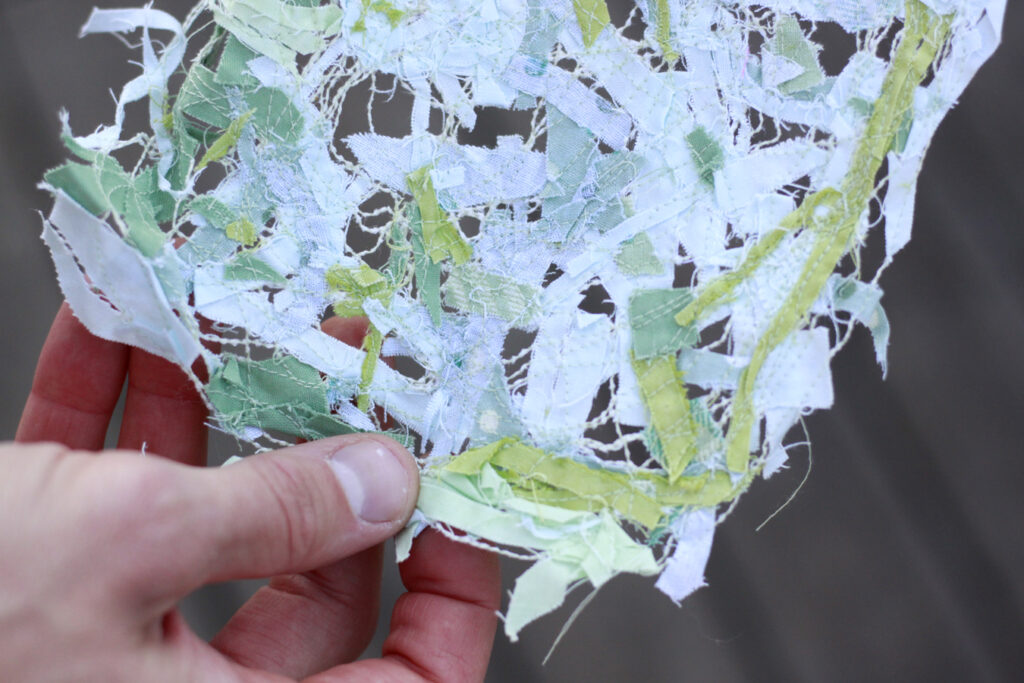
The green homemade scrap fabric in the above photo was made using thread, scraps, cotton yard (old sugar and cream from a garage sale.)

Finishing
Rinsing the Paper Off & Final touches:
When your finished the back of your fabric will show the water soluable paper and thread. The image below shows the fabric before dissovling and rinsing.
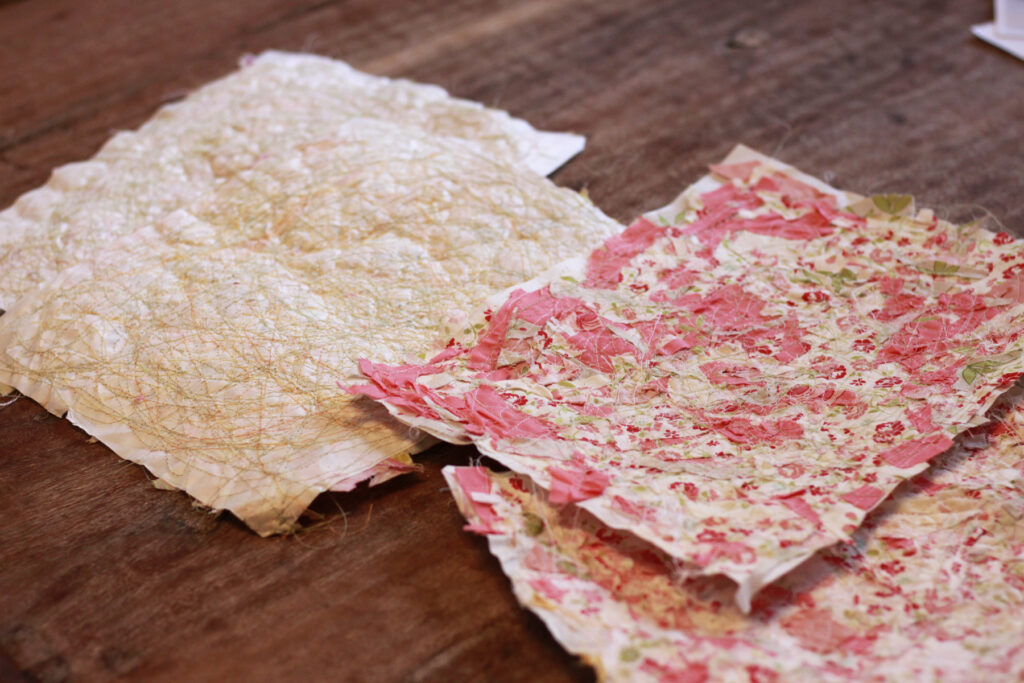
Dip the paper into hot running water wearing rubber gloves. Gently scrub off the excess paper with your fingers or water facuet.
I ring out the fabric and place on a dish towel to dry on a flat surface. Its not abnormal to take two washes if you still find residue on the surface.
If you find that some of your fabric fell apart in the sink, don’t fret, it’s fixable. Finishing rinsing and drying. Sew the scraps to mend any holds. If the hold is particulary bad, try putting another sheet of water soluable paper under the project and sewin a round two of scraps to fill in. Hand stitching can be a great option to mend and adds unquie detail especially for journals or greeting cards.
Creating Shapes:
You’ll find more inspiration cutting new fabric into shapes for next craft project or creating yardage by sewing your creations together.
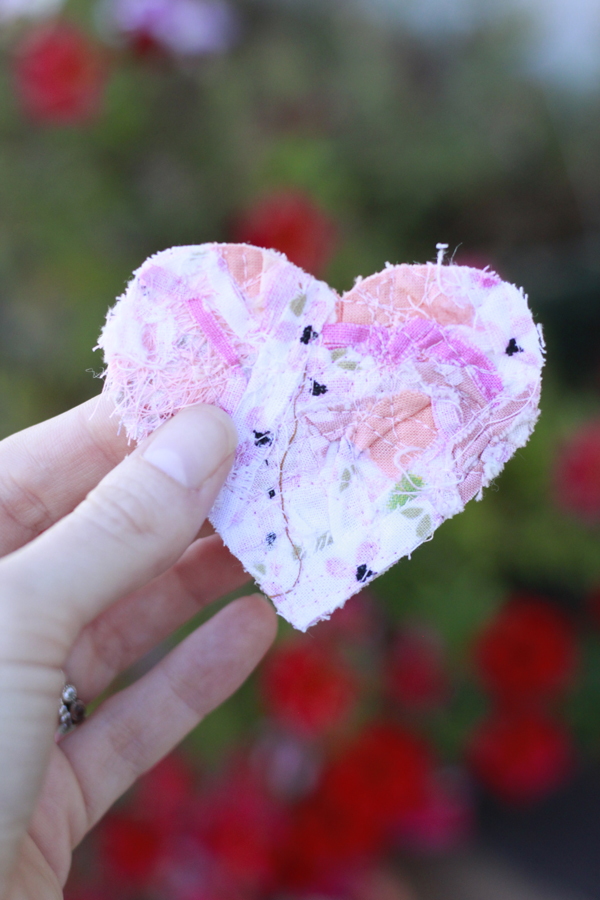
Making your own fabric is easy and inexpensive to do. To see what I’ve done with my scraps, check out some of our other scrap projects.
